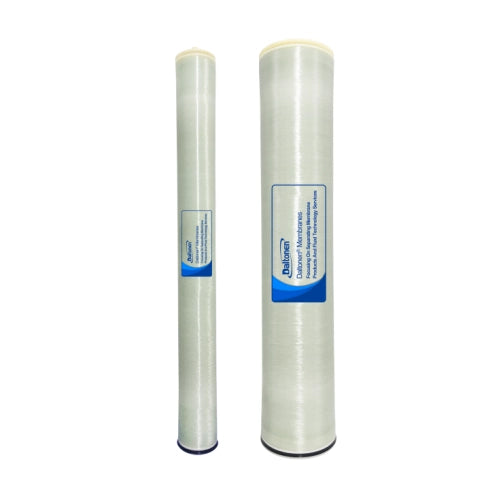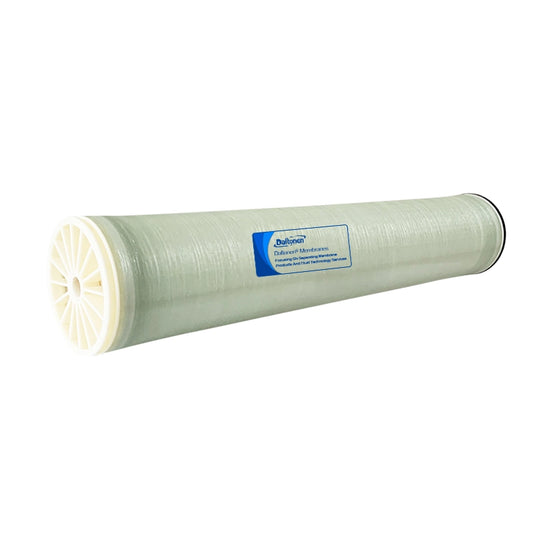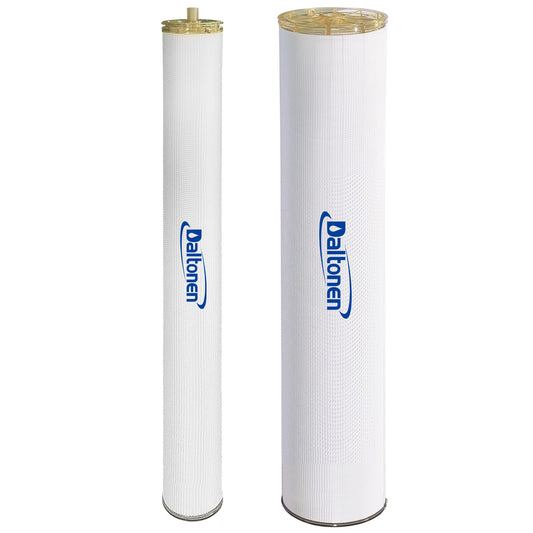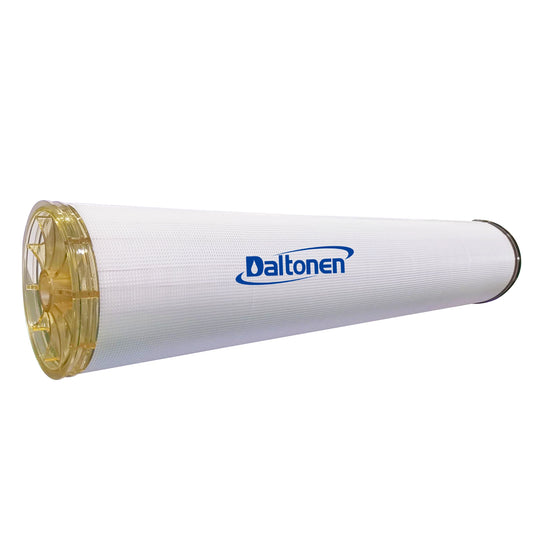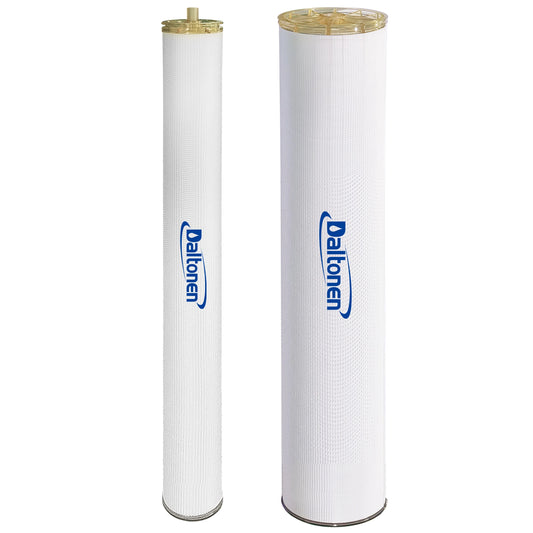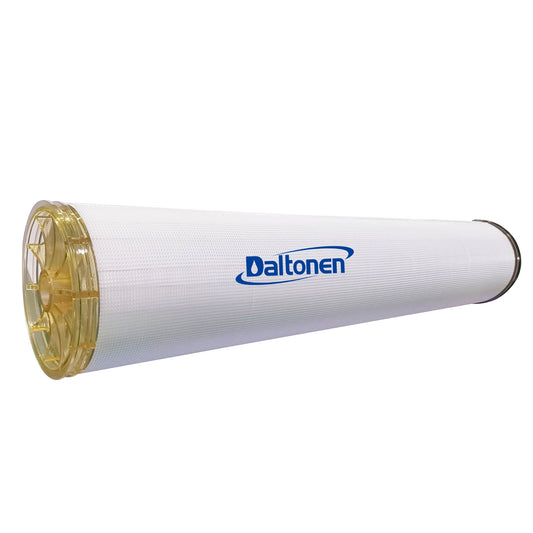Nanofiltration Membrane Can Separate and Concentrate Which Monovalent and Divalent Ions
Nanofiltration Membrane Can Separate and Concentrate Which Monovalent and Divalent Ions
1. Principle of Nanofiltration Membrane Separation and Concentration of Ions
1.1 Pore Size and Charge Characteristics of Nanofiltration Membrane
The pore size of nanofiltration membrane is between reverse osmosis membrane and ultrafiltration membrane, usually above 1 nm, generally 1 - 2 nm. This pore size enables it to effectively intercept some larger ions and molecules, but its interception ability for smaller monovalent ions is relatively weak. Most nanofiltration membranes are charged, usually with a strong negative charge. This charge characteristic means that nanofiltration membranes not only have a physical sieving effect when separating ions, but also generate an electrostatic repulsion effect.
For monovalent ions such as sodium ions (Na⁺) and chloride ions (Cl⁻), the rejection rate of nanofiltration membranes is usually low, generally 30% - 50%. This is because monovalent ions are small in diameter, and their electrostatic repulsion with the membrane surface charge is relatively weak, making them easier to pass through the pores of the nanofiltration membrane. For divalent ions such as calcium ions (Ca²⁺), magnesium ions (Mg²⁺), sulfate ions (SO₄²⁻), and carbonate ions (CO₃²⁻), the rejection rate of nanofiltration membranes is high, usually over 90%. This is because divalent ions are larger in diameter and their electrostatic repulsion with the membrane surface charge is stronger, making them harder to pass through the pores of the nanofiltration membrane.
In addition, the rejection rate of nanofiltration membranes for ions is also affected by factors such as the pH value of the solution, ion concentration, and operating pressure. For example, at a lower pH value, ions in the solution may have stronger electrostatic interactions with the membrane surface, thus affecting the rejection rate. At the same time, as the concentration of ions in the solution increases, the competitive adsorption and diffusion effects between ions will also affect the separation performance of nanofiltration membranes.

2. Separation and Concentration of Monovalent Ions
2.1 Sodium Ion (Na⁺)
Sodium ion (Na⁺) is a common monovalent cation in water, with a small diameter of about 0.266 nm. The rejection rate of nanofiltration membranes for sodium ions is usually low, generally 30% - 50%. This is due to the small size of sodium ions, which can pass through the pores of nanofiltration membranes more easily. In addition, sodium ions have a charge of +1, and their electrostatic repulsion with the negative charge on the surface of nanofiltration membranes is relatively weak, further reducing their rejection rate.
In practical applications, the rejection effect of nanofiltration membranes on sodium ions is affected by various factors. For example, at a lower pH value, the concentration of hydrogen ions (H⁺) in the solution is higher, which may compete with sodium ions for adsorption, thereby reducing the rejection rate of sodium ions. In addition, when there are other ions such as calcium ions (Ca²⁺) and magnesium ions (Mg²⁺) in the solution, these divalent ions may be preferentially intercepted by nanofiltration membranes, thereby affecting the passage of sodium ions.
2.2 Potassium Ion (K⁺)
Potassium ion (K⁺) is another common monovalent cation, with a diameter of about 0.266 nm, similar to sodium ions. The rejection rate of nanofiltration membranes for potassium ions is also low, generally 30% - 50%. This is mainly due to the small size of potassium ions and their weak electrostatic repulsion with the charge on the surface of nanofiltration membranes.
Similar to sodium ions, the rejection rate of potassium ions is also affected by factors such as the pH value of the solution and ion concentration. In a high-concentration potassium ion solution, the competitive adsorption effect between potassium ions may increase, thereby reducing their rejection rate. In addition, when there are other divalent ions in the solution, the passage rate of potassium ions may be further increased.
2.3 Chloride Ion (Cl⁻)
Chloride ion (Cl⁻) is a common monovalent anion in water, with a diameter of about 0.181 nm. The rejection rate of nanofiltration membranes for chloride ions is usually low, generally 30% - 50%. This is because chloride ions are small in size and have a charge of -1, resulting in a weak electrostatic attraction with the negative charge on the surface of nanofiltration membranes.
In practical applications, the rejection rate of chloride ions is also affected by various factors. For example, at a lower pH value, the concentration of hydrogen ions (H⁺) in the solution is higher, which may compete with chloride ions for adsorption, thereby reducing the rejection rate of chloride ions. In addition, when there are other ions such as sulfate ions (SO₄²⁻) and carbonate ions (CO₃²⁻) in the solution, these divalent ions may be preferentially intercepted by nanofiltration membranes, thereby affecting the passage of chloride ions.
3. Separation and Concentration of Divalent Ions
3.1 Calcium Ion (Ca²⁺)
Calcium ion (Ca²⁺) is a common divalent cation in water, with a diameter of about 0.38 nm. The rejection rate of nanofiltration membranes for calcium ions is high, usually over 90%. This is mainly because calcium ions are large in size and difficult to pass through the pores of nanofiltration membranes. In addition, calcium ions have a +2 charge, resulting in a strong electrostatic repulsion with the negative charge on the surface of nanofiltration membranes, further increasing their rejection rate.
In practical applications, the rejection effect of nanofiltration membranes on calcium ions is also affected by various factors. For example, at a higher pH value, calcium ions in the solution may combine with carbonate ions (CO₃²⁻) to form calcium carbonate precipitation, thereby affecting the rejection rate of calcium ions. In addition, when there are other divalent ions in the solution, such as magnesium ions (Mg²⁺), these ions may compete for adsorption, thereby affecting the rejection rate of calcium ions.
3.2 Magnesium Ion (Mg²⁺)
Magnesium ion (Mg²⁺) is another common divalent cation, with a diameter of about 0.38 nm, similar to calcium ions. The rejection rate of nanofiltration membranes for magnesium ions is also high, usually over 90%. This is mainly due to the large size of magnesium ions and their strong electrostatic repulsion with the charge on the surface of nanofiltration membranes.
Similar to calcium ions, the rejection rate of magnesium ions is also affected by factors such as the pH value of the solution and ion concentration. In a high-concentration magnesium ion solution, the competitive adsorption effect between magnesium ions may increase, thereby reducing their rejection rate. In addition, when there are other divalent ions in the solution, the rejection rate of magnesium ions may be further affected.
3.3 Sulfate Ion (SO₄²⁻)
Sulfate ion (SO₄²⁻) is a common monovalent anion in water, with a diameter of about 0.48 nm. The rejection rate of nanofiltration membranes for sulfate ions is high, usually over 90%. This is because sulfate ions are large in size and difficult to pass through the pores of nanofiltration membranes. In addition, sulfate ions have a -2 charge, resulting in a strong electrostatic repulsion with the negative charge on the surface of nanofiltration membranes, further increasing their rejection rate.
In practical applications, the rejection rate of sulfate ions is also affected by various factors. For example, at a lower pH value, the concentration of hydrogen ions (H⁺) in the solution is higher, which may compete with sulfate ions for adsorption, thereby reducing the rejection rate of sulfate ions. In addition, when there are other ions such as calcium ions (Ca²⁺) and magnesium ions (Mg²⁺) in the solution, these divalent ions may be preferentially intercepted by nanofiltration membranes, thereby affecting the passage of sulfate ions.

4. Summary
Nanofiltration membranes, as a new type of separation membrane between reverse osmosis membranes and ultrafiltration membranes, have shown significant performance differences in the separation and concentration of monovalent and divalent ions due to their unique pore structure and surface charge characteristics. Through an in-depth discussion of the principle of nanofiltration membrane separation and concentration of ions, and a detailed analysis of monovalent ions (sodium ions, potassium ions, chloride ions) and divalent ions (calcium ions, magnesium ions, sulfate ions), the following conclusions can be drawn:
4.1 Limited Separation and Concentration Effect of Nanofiltration Membranes on Monovalent Ions
Nanofiltration membranes have a low rejection rate for monovalent ions such as sodium ions, potassium ions, and chloride ions, usually 30% - 50%. This is mainly due to the small diameter of monovalent ions and their weak electrostatic repulsion with the charge on the surface of nanofiltration membranes, allowing them to pass through the pores of nanofiltration membranes more easily. In addition, factors such as the pH value and ion concentration of the solution also affect the rejection rate of monovalent ions. For example, at a lower pH value, the concentration of hydrogen ions in the solution is higher, which may compete with monovalent ions for adsorption, further reducing their rejection rate.
4.2 Significant Separation and Concentration Effect of Nanofiltration Membranes on Divalent Ions
Nanofiltration membranes have a high rejection rate for divalent ions such as calcium ions, magnesium ions, and sulfate ions, usually over 90%. This is mainly due to the relatively large diameter of divalent ions, making it difficult for them to pass through the pores of nanofiltration membranes, and their strong electrostatic repulsion with the charge on the surface of nanofiltration membranes, which further increases their rejection rate. However, the rejection rate of divalent ions is also affected by factors such as the pH value and ion concentration of the solution. For example, at a higher pH value, calcium ions may combine with carbonate ions to form calcium carbonate precipitation, thereby affecting their rejection rate.
4.3 Advantages and Limitations of Nanofiltration Membranes in Practical Applications
Nanofiltration membranes have broad application prospects in water treatment, food, medicine, and other fields. They perform well in removing hardness, organics, pigments, and some dissolved salts from water, especially in water softening, where they can effectively remove divalent ions such as calcium and magnesium ions while retaining some beneficial ions in the water. In addition, nanofiltration membranes also have advantages such as low operating pressure, low energy consumption, and compact equipment structure. However, the weak interception ability of nanofiltration membranes for monovalent ions limits their use in some applications requiring high-purity separation of monovalent ions. In addition, the performance of nanofiltration membranes is also affected by solution conditions and needs to be optimized and adjusted according to specific application requirements.
In summary, nanofiltration membranes have a significant advantage in the separation and concentration of divalent ions, but limited effect on monovalent ions. In practical applications, it is necessary to comprehensively consider solution conditions, ion characteristics, and membrane material properties to achieve the best separation effect and economic benefits.


